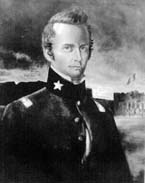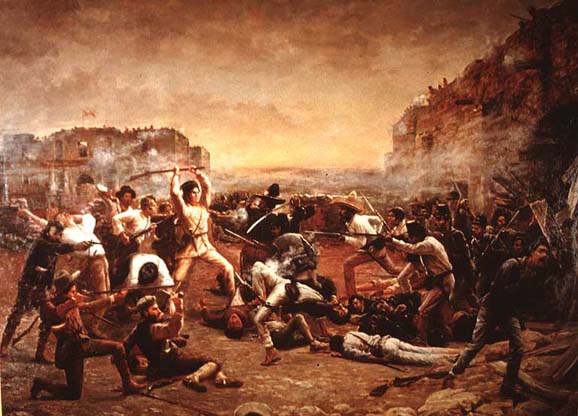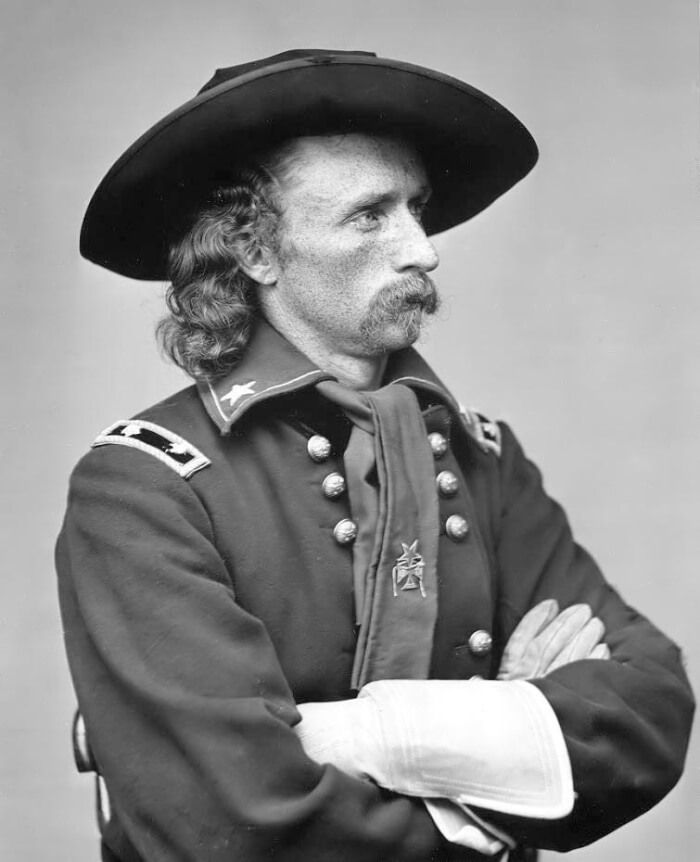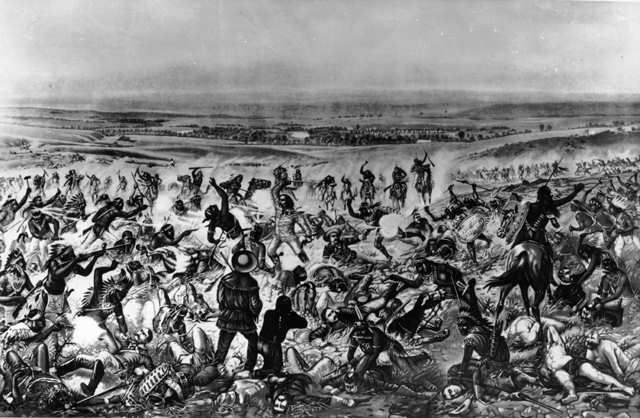American Frontier
21st Sep 2020
Bowie Knives
Bowie knives are a style of knife made popular in the early 19th century. They have a large, fixed blade, usually with a clip point.
The first knife made famous by Bowie was designed by his brother Rezin and made out of an old file. In 1827, in a brawl between Bowie and several men, Bowie was stabbed, shot and beaten. Known as the Sandbar Fight, Bowie managed to survive using his knife. Two others were not as lucky and lost their lives, with another four wounded.
But the Bowie knife legend begins in James Black’s blacksmith shop in 1831.
The stories say that Jim Bowie asked the blacksmith to make a knife for him from a wooden sample he had whittled and brought to the shop. Black made this knife, and also a modified second version of Bowie’s original design. Bowie chose the second knife upon paying. This design was like his, with the exception of the double edge along the top of the blade.

Remembering the Alamo
Perhaps the true beginning of the Texas rising, events took place in February and March of 1836 that would change the way Americans see war and rally to a cause. Under the guidance of General Santa Anna, the Mexican commander demanded the mission station known as the Alamo be surrendered. The Texans inside, led by Colonel Travis fired a cannon as his reply. Bold and brash to be sure, but clear and unmistakable in its meaning; if you want it, you''ll have to take it, because it belongs to us

The Texans were able to fortify the Alamo to some degree and with 145 brave men they stood against the tyranny of Santa Anna and his 3,000 troops. Not to be outdone, Santa Anna ordered 2,500 of his troops to storm the Alamo. The attack was turned back not once, but twice which was and still is one of the best examples of bravery and what can be accomplished when you stand as one for a single cause. Furious, Santa Anna with the thought to win at all costs sent a third wave of attacks and this broke the Texans reserves.
The Americans still did not cede the battle and defended the Alamo room by room, not giving an inch without a fight and surprising the Mexican troops with their ferocity. However, the numbers were too much and the few men, women and children that still survived were eventually driven back and held out in the church which would be the site of their last stand. All the men gave their lives in a battle that would later help unify a nation. And to the Mexicans credit they spared the 30 women and children.
The Alamo was not taken lightly, the Mexican force suffered horrible casualties losing 1,600 soldiers with many more wounded. Incredible to think a hundred or so Texans with muskets, Bowie knives, swords, sabers, hatchets and farming tools could hold a professional army off long enough to make a statement that will be remembered as long as battles in US history are chronicled. The men died, but the spirit and what they fought for lives on. Remember the Alamo!
Robin Chaudhuri, ACC Senior Writer

"The Fall of the Alamo" by Robert Jenkins Onderdonk
Custers Last Stand
The Battle of the Little Bighorn, also called Custer's Last Stand was fought on June 25, 1876, near the Little Bighorn River in the Montana Territory. Tensions in the area had been on the rise since the discovery of gold in South Dakota’s Black Hills territory. The U.S. Army ignored previous treaty agreements and invaded the region. This led many Sioux and Cheyenne tribesmen to defiantly leave their reservations. When a number of tribes missed a federal deadline to move back to reservations, the U.S. Army was dispatched to confront them.

Federal troops led by Lieutenant Colonel George Armstrong Custer confronted Lakota, Sioux and Cheyenne warriors. Custer was unaware of the number of Indians fighting under the command of Sitting Bull at Little Bighorn due to being misinformed by scouts. The scouts had never seen a gathering this large and underestimated the sheer number of people and warriors they could muster. As a result, Custer's forces were badly outnumbered and could not withstand the resistance they faced.
This marked the most decisive Native American victory and the worst U.S. Army defeat in the long Plains Indian War. Although there was much rejoicing from Native Americans following the victory, it was short lived. News of the battle, skewed in the Army's favor, outraged many Americans and solidified in their minds how Indians were wild and bloodthirsty and needed to be controlled. The U.S. government responded to the public's outrage by increasing its efforts to subdue the tribes. Within five years, almost all Native American tribes of the region would be confined to reservations. A sad event on both sides, but one we remember for its importance. There are many items which highlight and can help educate from this time and we're glad to bring some of those to you.



 Gift Cards
Gift Cards